Ormsby #79: In praise of grass
David Pitt-Brooke is a vagabond Thoreau. He can talk the talk cuz he's walked the walk.
January 26th, 2017

Some grass you can smoke. It's the other kind that goes up in smoke that matters. Kelowna, 2003.
His new book recalls tramping 1,000 kilometres through the grasslands of southern B.C. from the border to the Cariboo and Chilcotin.
REVIEW: Crossing Home Ground: A Grassland Odyssey through Southern Interior British Columbia
By David Pitt-Brooke
Madeira Park: Harbour, 2016.
$32.95 / 978-1-55017-774-9
Having hiked solo through the traditional territories of the syilx, nlaka’pamux, secwepemc, st’at’imc, and tsilqhot’in peoples, David Pitt-Brooke — naturalist, veterinarian, and writer — has produced a meditative guidebook after an epic journey through an ancient, fragile, and vulnerable grasslands ecosystem.
Harold Rhenisch appraises Pitt-Brooke’s journey, poinying to paths taken and not taken, and he weighs in with his own experience of nature and nature writing in the southern half of British Columbia, including explorations south of the border.
Rhenisch has written the text for a book on much the same subject as Pitt-Brooke, Spirit in the Grass (Country Lights 2008), co-authored with photographer Chris Harris, also that book’s publisher.
Last year John Thistle’s study of managing (and mismanaging) B.C.’s grasslands, Resettling the Range: Animals, Ecologies, and Human Communities in Early British Columbia (UBC Press) won the 4th annual Basil Stuart-Stubbs Prize for Outstanding Scholarly Book on B.C. and was also shortlisted for a Roderick Haig-Brown regional prize. – Ed.
*
by Harold Rhenisch
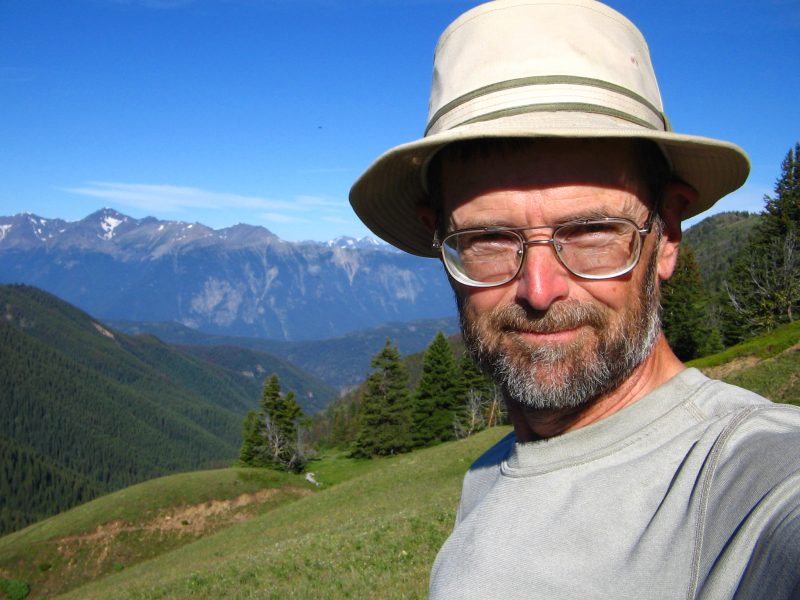
David Pitt-Brooke envisions grasslands as common space, cared for by a few for the enrichment of all.
David Pitt-Brooke has walked through the grasslands of southern British Columbia to bear witness to the state of some of the world’s most unique grass. To put this trip into perspective, 200 years ago about twelve percent of the temperate zone of the earth was covered in grass. In British Columbia we have the most unique intact piece left. From Osoyoos to Williams Lake we also have some of the most abject grassland ruins: productive, sustainable environments transformed into barren lands of weeds, low-yield vineyards, and asphalt.
Pitt-Brooke’s walk to bear witness to the state of the grass is a model of right action. His meditations on what the condition of the grass says about people in this place, and of what might be practically done to renew the health of both grass and society, are part of a vital conversation with the earth, how we react to her, and what we can expect to be given in return.
His journey north from ecological poverty to pristine bunchgrass isn’t easy. There are prickly pear cactii, for one thing, which share a habitat with one-man tents, and there’s often not a lot of freely-flowing water.
The latter might actually be Pitt-Brooke’s fault. He doesn’t like rain. He continually interrupts his walkabout when it falls. Over and over, he hides in his tent for days, or even leaves and returns in bright, open sunshine, when the water that fell freely from the sky has been hidden within soil, air and plants. It’s a small glitch in process, yet an important one: a book that talks about drought in a landscape and then proceeds to avoid the water in the landscape may have overlooked something else.
Pitt-Brooke has made a generous journey here, allowing space for anyone not from these grasslands to get used to the view. His expository style is helpful to any British Columbian, nominally a co-steward of this planetarily-unique landscape, who doesn’t know of these grasslands, or doesn’t understand their one- and two-metre-tall old growth grasses. His companionable style flows easily between ecology, geology, flora, fauna, history, sociology, anthropology, weather, and personal impressions.
In short, he locates his readers in space and time. This is important in any book and it works well here. And it’s a great journey. Pitt-Brooke sets a few points of pilgrimage, puts his feet to the ground and then follows them wherever they go in between. The walk, he reasons, is everything.
And it’s an amazing walk. He clocks up 1,000 kilometres. His pilgrimage points are: Crater Mountain in the Similkameen (a fine volcanic height above the Ashnola River), Kobau Mountain and Kruger Mountain (protected areas in the South Okanagan), Okanagan Mountain (a park across Okanagan Lake from Peachland), Kalamalka Lake Provincial Park (a protected area in Pitt-Brooke’s hometown of Coldstream), a trail (real or imagined) over the west wall of the Okanagan and on to Douglas Lake Ranch in the Nicola, Lac Du Bois (a grassland on the wall of the Bonaparte Plateau), Ashcroft (where he lived as a young child), Oregon Jack Creek (a grassland first settled 11,000 years ago), and the protected Churn Creek, Empire Ranch, and Junction Sheep Range grasslands along the Fraser and Chilcotin Rivers. It’s a fine catalogue.
For all its companionability, Pitt-Brooke’s take-it-as-it-comes method does miss important stuff: Okanogan County, Washington, for example, which is the same grassland as a metre north of the border, or the rest of Washington east of the Cascades, or central and southern Idaho, or eastern Oregon — all the same grassland, all with a similar history, all in various states of protection, health, decay, resurrection, and ruin, and all connected to each other.
As the ecologist Ordell Steen put it while at work on Chris Harris’s grasslands book, Spirit in the Grass (Country Lights Publishing, 2008), the southern Canadian Okanagan around Vaseux Lake is one of the most vital points in the grasslands, because it is there, and almost only there, that all of the ecosystem’s threads, from forest to lakes to savannahs to rivers to shrub steppes to desert to open grassland, meet, mingle and evolve together. More to the point, Vaseux Lake was an important syilx village: the final thread in this ecosystem.
That Pitt-Brooke chooses to focus on the grassland north of the American Border indicates that this is at heart not a book about grass as much of how certain people live on it, and with it, and from it, although not perhaps others.
In any discussion of grasslands stewardship, it is useful to remember that this is not the interior of the great continental cities of Seattle and Vancouver. This region spanning the U.S.-Canada border gets its name from the Hudson’s Bay Company pack train route, the interior route from The Dalles on the Columbia to the Far North — an alternative to the ice-choked sea route out of Hudson’s Bay.
Because of that connection, our province is known today as “British Columbia” instead of “British Fraser” or “British Skeena.” The ancient Wishram trading and fishing camp at the Dalles, which preceded the Hudson’s Bay Company by many thousands of years, is a centre of the grassland ecosystem. The border reduces that historical depth to a story of grass, pristine or grazed down by one governmental regime or another. It is largely a story of borders.
Pitt-Brooke’s casual travelling method misses other opportunities for seeing the grasslands in their full and complex scope: the Tulameen, sacred Kliluk (Spotted Lake), on the old trail to the Richter Pass, for instance (or any other sacred sites — there are many); most of the Similkameen between the Ashnola and the border at Nighthawk, the ancient hunting trail on the rim of Cawston Creek Canyon, one half of the Okanagan (he has, after all, to choose one side of the valley over the other), all of the Nicola between Quilchena and Spences Bridge, over half of the Thompson, all of the Fraser between Lytton and Lillooet, the scoured flood channels of the Deadman, the saskatoon gardens and baked volcanic clays of the Thompson, the wetlands of the Chilcotin, the unique porcupine/needle-and-thread grasslands of Beecher Prairie, and the ancient Interior Douglas fir savannahs of the Cariboo and the Bonaparte, including the grassland complexes between Springhouse, Esket (Alkali Lake) and Xgat’temc (Dog Creek) and the people who have lived on them for 6,000 years or forever.
Still, Pitt-Brooke can’t be everywhere, and his example does open up the possibility of exploring these regions on their own, to see what can be seen there.
Stresses on the grasslands include water infrastructure, agriculture, urbanization, road-building, forest in-growth, infections of weeds, grazing, fire, recreation, flooding, and mining, all within a framework of private, government, and community authority across Indigenous and non-Indigenous communities, both rural and urban.
Currently, the grasslands are under the care of several governments: Canada, British Columbia, and the governments of the syilx, nlaka’pamux, secwepemc, st’at’imc, and tsilqhot’in peoples. The Canadian Supreme Court recognizes their Aboriginal title to this land and its water. It is a complex, tangled, and dynamic conversation socially, politically, and environmentally.
There is still beautiful grass in the Okanagan, and in Washington, Oregon, and Idaho, but it is in small, broken, pieces and vulnerable to encroachment. Pitt-Brooke suggests Ashcroft or Kelowna as examples of how the unhealthy state of the grass is also a measure of social unease. He could just as well have suggested Spences Bridge, Merritt, Quilchena, Okanagan Falls, Rock Creek, or Alkali Lake; or Cache Creek, which survives by storing garbage trucked up from Vancouver.
But that’s not the point. More important is that this is a region often dismissed as a developmental failure after the collapse of placer mining in 1861, of ranching a decade or two later, or, as Pitt-Brooke points out, of apple growing in 1949, or of the great Kelowna fire of 2003. The easy conclusion is that the grasslands are a harsh climate, difficult to work with. Pitt-Brooke avoids it for the harder conclusion that it’s not development itself that has caused the death of much of the grass. Wrongful development certainly has done so, as has disrespect for the grass and its people.
Pitt-Brooke counters this disrespect well by loving the grassland fully and deeply, and taking us out to see it. At the same time, he simplifies the grasslands’ social complexity through long processes of thought, which he presents without clarifying the steps in argument that led to his conclusions. Like the veterinarian he is, he diagnoses the health of the grasslands as he walks, and he prescribes remedies. His yardstick is an indefinite natural state before horses and cattle started eroding British Columbia’s grasslands. By standard reckoning, horses arrived around 1780, four decades before Europeans, although new DNA evidence that the wild horses of the Chilcotin contain American, Spanish, Russian, and Siberian bloodlines, suggests a possible far earlier date.[1]
Pitt-Brooke’s prescriptions aim for simplicity and directness. For example, he walks through Okanagan Mountain Provincial Park, a bit more than a decade after it went up in flames in 2003. It was a fire that burned hot and fast. Pitt-Brooke spent his youth in this beautiful park and is saddened and angry as he walks through its scorched ruins. Understandably, his prescription for the grassland does not include fire, because no grass can withstand that kind of heat. No argument there.
Nonetheless, an argument is only as good as its ability to rise above challenges to its authority, and there is, in fact, a legitimate challenge here. This grassland is, historically, a fire landscape. If fire is fast, light, and frequent, it recycles old thatch into nutrients for new grass and into space for the hundreds of other species that make up a healthy grassland.
For perhaps 6,000 years before Europeans arrived, the peoples of the grass used fire to maintain such conditions. It was only after the suppression of Indigenous burning in 1920 that trees began to move into grasslands that had been clear of them for human history.
Therefore it is not the grasslands themselves that burn too hot, but the forests that were allowed to grow into the grass by the suppression of Indigenous fires. It other words, it might not be burning that’s the problem; it might be the invasion of socially-maintained space by ideas of private property, pristine wilderness, and natural succession.
This conversation is ongoing. Given the lack of productivity that stunted, fire-prone ingrown forests provide — good neither for timber, grazing, gathering, nor wildlife — the Ministry of Forests has been experimenting with controlled burning in the Chilcotin. The goal is to determine whether limited burning can return grasslands — and forests — to health.
Pitt-Brooke’s thesis that healthy grass is untouched grass, and that the replacement of grass with trees is a natural succession that should not be culturally challenged, is a part of this conversation. A simple dismissal of fire is not an effective inclusion of this important context.
Still, this is an honest book. It is led by one man on his own two feet. Its witness is on the scale of human perceptions. Its discussions are based on natural science. Its social understandings are rooted in a sense of home. Its proposed solutions to the erosion of grass attempt to be achievable within the context of British Columbian culture. Its vision is of grasslands as common space, cared for by a few for the enrichment of all: Pitt-Brooke envisages small private holdings preserved by owners as points of pride in a connoisseur culture that collects grasslands the way wealthy people now collect fine art.
Pitt-Brooke neither develops nor denies this aristocratic perspective. He does, however, explain that for him the pinnacle of Okanagan grassland culture occurred in the 1950s, when a combination of orchards, towns, and grassland allowed for a balance of beauty, natural social health, and industry. Pitt-Brooke hints at his vision of how to renew this social space when he walks down into Ashcroft, a town a bit down on its luck, and imagines the lovely Norman Rockwell town it might have been.
Against this colonial vision, a counter-argument could easily be made that the grass around Ashcroft, and around Pitt-Brooke’s native Coldstream, is in bad shape because of the imposition of images of Norman Rockwell on nlaka’pamux or syilx space, not because of their absence. I am troubled both by Pitt-Brooke’s lack of acknowledgement of the complications within his own cultural background and the absence in Crossing Home Ground of a dynamic Indigenous perspective.
I sense another missed opportunity for cultural connection, made more poignant by Pitt-Brooke’s personal writing style, which reveals an obvious devotion to the land, a care for future generations, and direct and even blunt arguments often resolved by humour – qualities that would not be out of place in Soda Creek, or Kamiah, Idaho, or any Indigenous village in between. The grass, in other words, might have taught Pitt-Brooke similar lessons to ones it taught the Syilx and the Nimíipu’u long ago; either way, such an admission of humility is missing, and missed.
Pitt-Brooke has a closer focus. In support of his reading of grasslands history, he notes that while today’s pristine Cariboo-Chilcotin Grasslands were grazed to dust in 1871, timely intervention has made them as productive now as they were 4,000 years ago. On this hopeful example, Pitt-Brooke concludes that the grass will heal itself if we just leave it completely alone. It might, if wild grass without people were the goal.
If it is, that would be an imposed solution, because it is not an Indigenous one. For example, Pitt-Brooke records that CORE, a local governmental, business, and environmental committee, was so divided over the issue of industrial rights on the land that it effectively ended the Canadian government’s attempt to create a national grasslands park in the Chilcotin in 1992 and 1993.
In the politically charged context of the times, what resulted was the much more limited Junction Sheep Range and the Churn Creek and Empire Valley Ranch protected areas, the latter still a working farm. Pitt-Brooke fails to mention that a similar park, around Mount Kobau, has stalled today for the same reasons.[2]
In both cases, ranchers’ desire for unfettered access to summer range was a sticking point. Pitt-Brooke does not mention that these meetings between ranchers and government were merely the latest chapter of a process of skilful manipulation of governmental process stretching back to the original, often illegal, colonial privatization of the land.[3]
On the shoulders of a long history that imposed just the opposite, today’s tsilqhot’in and syilx have consistently argued for two principles: no land will be alienated until reserves are increased to a size adequate for supporting Indigenous communities, and protecting land means protecting the roles of Indigenous people within its ecology. These are strong arguments. They support Indigenous identification with the grassland and its maintenance by fire.
Their absence in Pitt-Brooke’s summary contributes, however unintentionally, to the alienation of Indigenous grassland people from their full right to determine their identities in conversation with their land and with the history of their lives upon the land. It is not a right that can be given to them or one that can be taken away.
What’s more, Pitt-Brooke’s other readers also need more than a replacement of Indigenous forms of cultural connection by a concept of ownership for the wealthy or for the provision of aesthetic enjoyment of grassland in the form of an elite status object. If such a strategy truly is the best option for the grass and for society, British Columbians are going to have to collectively choose a different method of government than we have now. That will take some discussion.
History gets removed from the grasslands in a similar way. For example, Pitt-Brooke goes up Kruger Mountain, along the Washington-B.C. border between the Okanagan and the Similkameen, sets up his tent, and watches the lights come on as evening settles into the American portion of the Similkameen Valley below. It’s a beautiful picture, but unreliable. If, as he writes when he comes down off the mountain, “Falsifying the past destroys any value it might have had as a guide to the future,” muddying the present must risk the same fate.
The unreliability is this: from Kruger Mountain, he peers southwest into the grasslands of Washington, and observes: “Deep down in the valley of the Similkameen, a few scattered lights punctuate the darkness. The farms along the river. That’s America down there. Howdy, neighbours!”
It’s a beautiful view. Thing is, there is little more than one farm down there, and something like twenty other houses, give or take. It’s a mining and retirement district up against a wildlife preserve. It’s not a farming district. Much of the history of these grasslands hinges on the Indigenous dispossession created by those mines, the desertified open rangeland between them, and even by that wildlife preserve.
All this region of northern Washington between the Cascade Range and the Kootenays, from Chelan north to the British Columbia border, would have been an Indian reservation with a far different human-grass ecology if it hadn’t been for the mines Pitt-Brooke is looking down over. The relocation of the northern syilx to tiny reservations on scarcely farmable land is part of this story, as is the tragic fate of the grasslands of the Okanagan and Thompson valleys. All this might be foreign history to Pitt-Brooke’s message of the need for untouched grassland in British Columbia, but it’s not foreign to the grassland that is his subject or the people who are indivisible from it.
Pitt-Brooke walks past more history on his way down from Kruger Mountain to Osoyoos. He bypasses Kliluk (sacred Spotted Lake) and in so doing, skirts any chance of speaking about the spiritual dimensions of the grasslands. At the Tourism BC Info Centre on the outskirts of Osoyoos, he views Smoker Marchand’s sculpture Unity Rider (an iron brave with an upraised iron spear on an iron horse), and dismisses it as “wrong.”
“This is from the ‘give the folks what they want’ school of heritage interpretation,” Pitt-Brooke comments, followed by an explanation that before the introduction of horses, the syilx moved by foot; the horse appeared in the “twilight” of their culture.
In one sense, Pitt-Brooke is making three valid points: walking was important here; experiencing this landscape by foot does reveal its ancient scale, which might be useful when projected into the future; and the grass would have been quite different before horses. Fair enough.
However, we’re not living in the twilight of syilx culture. The syilx today are fully modern people with fully modern aspirations. Even historically, their relationship to the grass was modern. An estimated eighty percent of food eaten by traditional plateau families came from the grasslands in the form of berries, roots, and bulbs: a suggested 2,000 pounds annually per family. To harvest it would have taken a lot of time. A horse to drag it around would have been welcome. The adoption of the horse speaks to a dynamic culture absorbing new technology for survival.
Instead of acknowledging this creativity, Pitt-Brooke dismisses Marchand’s sculpture, apparently for two reasons: it portrays a horse (unhealthy to the grasslands) and a syilx man on a horse (instead of walking). There is no mention that Unity Rider is not British Columbian but one of a string of similar sculptures stretching up through syilx territory from Marchand’s garage in Inchelium, Washington, to Kelowna.
Unity Rider lives within the context of the important advantages horses gave the syilx for survival against the pressures of American and Canadian privatization of their land — privatization that is still being resisted. The sculpture is part of that resistance, part of a cross-border story of renewed cultural, political, and economic stewardship — exactly the points of authority that Pitt-Brooke claims for himself. It is a missed opportunity for common ground.
It isn’t the only one. In a discussion of the inaccuracy of the historical records of the grasslands, for example, Pitt-Brooke mentions the Fraser River gold rush of 1858, which brought “herds of cattle from Washington and Oregon” to supply the “many thousands of miners who’d been streaming into the Fraser River Canyon all through that spring, summer and autumn.” This is a point well made.
There is, however, more of relevance here: 30,000 miners streamed up the Fraser canyon, but 10,000 others, in private armies of approximately 100 men each, armed to the teeth, with heavy wagons loaded with ammunition, streamed up through the Similkameen and the Okanagan in defiance of the laws of both Great Britain and the United States. A huge amount of blood was shed: perhaps up to 3,000 nlaka’pamux died in the Fraser Canyon and an unknown number of syilx in the Okanagan — at least a half dozen in a genocidal action in West Kelowna, in a context of ambushes of set fires all the way north from Brewster, Washington. That invasion is referenced by Marchand’s sculpture.
Pitt-Brooke’s greatest addition to this particular conversation is that the cattle trampled grass along the trail, deeply eroding the valley before European settlement, and that no historical record describes how the untouched grasslands might have looked. It’s an invaluable observation — but since it leaves out the social story of the violence which accompanied the herds of 1858-1861, it misses a possible cause of the death of the grass: not bad grazing practices alone but human invasion, land usurpation, and racially-directed violence. Clearing the grassland peoples from the grass to create a grassland wilderness, however invaluable, is not respectful of this history.
Pitt-Brooke continues with a call for all cattle to be removed from the grasslands because bunch grasses evolved in the absence of heavy cloven-hoofed herds; it literally turns to dust under their sharp feet. That’s certainly a rational argument. It is, however, not the only one. The B.C. Grasslands Conservancy Council, for example, supports the retention of large grassland ranches. The sheer size of some ranches prevents the increased exposure to the ecological erosion that plagues small-scale land-holdings. The cattle on vast ranches might still be harmful to grass, but ranch size does allow a herd’s time on a range to be reduced to a brief, low-impact period in the spring.
Pitt-Brooke’s alternative prescription, on the other hand, fails to convincingly make a case why a herd of syilx horses in the Okanagan and a smaller tsilqhot’in herd in the Junction Sheep Range would have been more destructive of grassland than 38,000 acres of orchard in 1958. In addition, without a discussion of the dogged issues of grasslands erosion in Cherry Creek, a suburb of Kamloops, Pitt-Brooke’s vision of private, aesthetic ownership of small plots of grasslands seems uninformed.
Oversights like these come into focus when Pitt-Brooke gets up on the heights of Oregon Jack Creek, high above Lillooet, where Indigenous hunters made camp 11,000 years ago. He talks about “this happy little band of hunters,” points out that they died out, and only later remarks that they vanished because they intermarried with incoming salishan salmon fishers, now the st’at’imc.
That doesn’t sound like dying out or “a happy little band.” It sounds like 11,000 years of living in one place and adapting socially in order to do so. It sounds like coming together. And that sounds exactly like what Pitt-Brooke professes to want for the grass. Perhaps the answer to Pitt-Brooke’s quest lies not in what he includes in his walk, but what he walks past.
These caveats aside, Pitt-Brooke’s amazing journey is of vital importance to all British Columbians, if not all humans. Grasslands like this are our native habitat. Our bodies, as Pitt-Brooke points out, are made for this place. We fit here. If we lose pristine grasslands, we irretrievably lose ourselves. Pitt-Brooke walks through and documents remnants of a once vast community of such grasslands reaching down into Texas.
This book is of such importance that it earned support from the B.C. Arts Council. I’m sure that the publisher also invested heavily in editing. Nonetheless, Pitt-Brooke’s courageous attempt to bring this vital conversation to all British Columbians has been released in an incomplete form. More editing, and more research support, would have helped it enormously.
The provision of that support would have been a respectful choice from a government entrusted with protecting this resource and securing the welfare of its people. As such, despite the book’s beauties, knowledge, wisdom, and clarity, its oversights risk setting the cause of the grasslands backwards instead of forwards.
That’s not a result that Pitt-Brooke, or any of us, want or need. Please read Crossing Home Ground and help to generate greater awareness of grasslands, affording grasslands a level of respect and care that our ancestors and children deserve.
*
Harold Rhenisch was raised in the grasslands of the Similkameen Valley and has written some 30 books from the Southern Interior since 1974. He won the George Ryga Prize for The Wolves at Evelyn (Brindle & Glass, 2006), a memoir of German immigrant life from the Similkameen to the Bulkley. His other grasslands books are the Cariboo meditation Tom Thompson’s Shack (New Star, 1999) and the Similkameen orchard memoir, Out of the Interior (Ronsdale, 1993). He has worked closely with the Cariboo Photographer Chris Harris on his Cariboo-Chilcotin and grassland books published by Country Lights: Spirit in the Grass (2008), Motherstone (2010), and Cariboo Chilcotin Coast (2016), as well as The Bowron Lakes (2006), and he writes the blog Okanagan-Okanogan: One Country without Borders, from his home in Vernon. For seven years, he has toured the grasslands of Washington, Oregon, and Idaho while working on Commonage, a history of the Okanagan Valley set in its American context, highlighting the American history of Father Charles Pandosy and situating the roots of the Commonage land claim in the North Okanagan in American colonial practice in Old Oregon.
*
The Ormsby Review. More Readers. More Reviews. More Often.
Reviews Editor: Richard Mackie
Reviews Publisher: Alan Twigg
The Ormsby Review is hosted by Simon Fraser University.
—
BC BookWorld
ABCBookWorld
BCBookLook
BC BookAwards
The Literary Map of B.C.
The Ormsby Review
[1] See also John Thistle, Resettling the Range: Animals, Ecologies, and Human Communities in Early British Columbia (Vancouver: UBC Press, 2015).
[2] See Caroline Grego, “Maybe National Park: Consultation, Conservation, and Conflict in the Okanagan-Similkameen,” BC Studies 186 (Summer 2015), pp. 9-30.
[3] See Cole Harris, Making Native Space: Colonialism, Resistance, and Reserves in British Columbia (Vancouver: UBC Press, 2002).
[Kelowna fire photo courtesy Vancouver Sun]


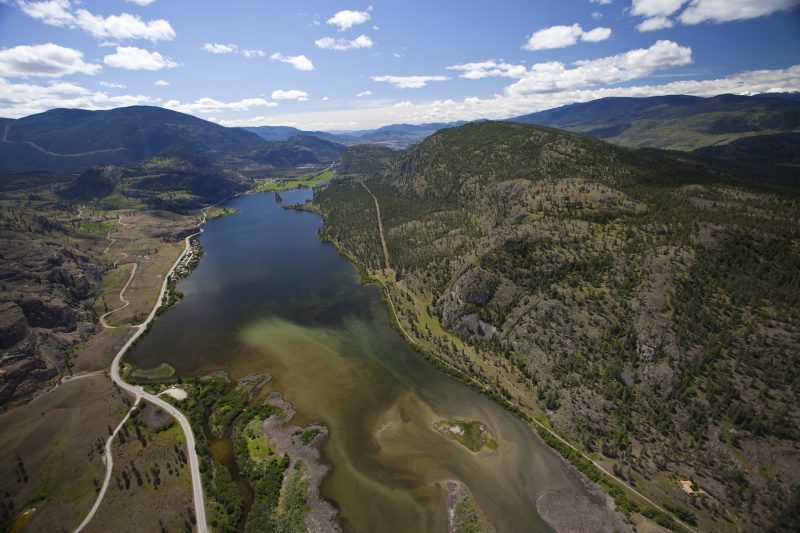
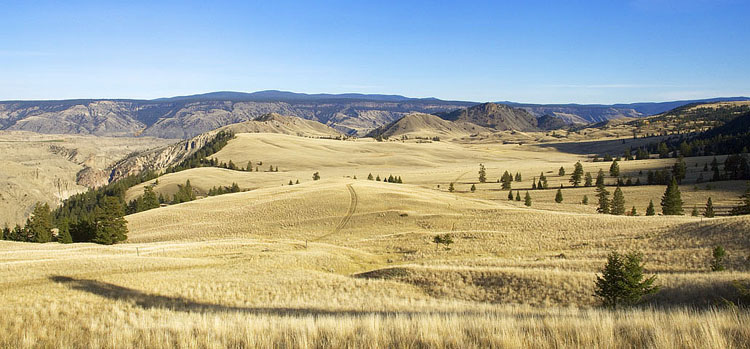

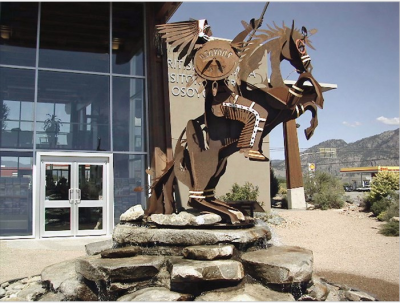
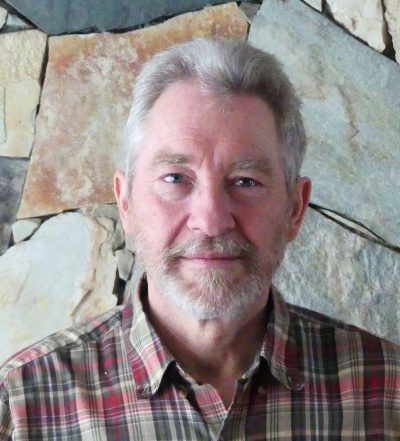

Leave a Reply